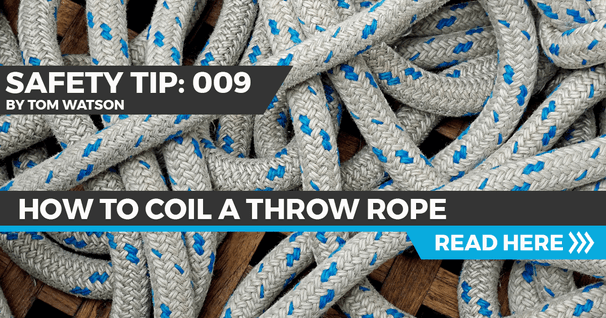Signaling: When to Use What
If you've ever been to a sea kayaking symposium, you've probably run into one of those folks armed with flares, whistles, smoke, day-glow jumpsuit, a mirror, EPIRB, VHF, GPS, SATCOM and operational manuals that are inconveniently non-waterproof. In the right context any of these items could save your life or at least get you arrested when you try to board a plane.
So when do you signal for help? When you find yourself in a situation that is beyond your capability. Yeah, its sort of like guys asking for directions…judgement IS always a factor. Not that you start by shooting rocket flares and shouting "mayday" at the top of your lungs…let's look at our options:
Sonic signals:
- Whistle: keep a high intensity whistle attached to your PFD. Three sharp blasts mean help and can be heard a fair distance.
- Air horn: these small devices that used canned air can really pack a sonic wallop…however, most people will think you are just screwing around. Remember 3 sharp blasts.
Visual signals:
- Paddle Waving: Really. Put a little reflective tape on the back of your paddle and you'd be amazed at how far it can be seen when waved back and forth.
- Rocket flares: ONLY use these when you can see whom you are trying to attract. White work well in the day and red at night or against a dark sky. Bear in mind that you have a limited supply and that they usually have very short burn times. You may need to save one so that your potential rescuers can follow the signals to you.
- Smoke or locator flares: These are usually handheld and used to help people find you once you've initially gotten their attention.
- Signal Mirror: On sunny days a simple mirror with a sighting hole will almost blind a boater at quite a distance if you want to get them to see you. You may already own several…CD's make terrific signal mirrors. That nugget comes courtesy of Karl Pearson.
- Orange distress flag: These large plastic square bags can also aid in exposure situations and is a good day time visual from the air when laid out on your boat or the water's surface.
- Fires…3 of anything mean SOS. Better hope Wilson's got the matches.
Phone home:
- Cell phones are getting to be very useful as coverage is getting better all the time. Be sure to have it accessible and in safely waterproof storage.
- Hand Held VHF's: You no longer need a license to operate one of these radios with a 5-mile line-of-sight range. You can even get good submersible ones for less than $200 now. You can make a general distress call or call a marine operator to get access to the phone line system. They even offer a full compliment of weather stations. In a pinch you can even talk to other boater with them to get a line on weather that you can't see from down low. These are really a must for anyone wanting to do overnights or open water trips.
- Satellite telephones? No, you don't need to drive a Humvee and have a name like Clutch to own a satphone now. You can buy one off the web for $900 and be able to phone virtually anyone from a deserted beach in some banana republic. Ask me how I know.
Remember, be prepared for the conditions you are paddling in, but if you are exercising proper judgement you shouldn't find yourself in need of any emergency arm waving.
Related Articles
What is the main difference between a dry suit and a semi-dry suit? Why is there's such a big difference…
Throw ropes are a critically important “life line” in certain rescue situations where approaching…
Even though the weather is getting warmer, most likely the water is still cold. Watch this video…
Where I am temperatures are dropping, so it's almost dry suit weather. With that here's a video with…



